Blazing Trails for CCLC Youth and Families
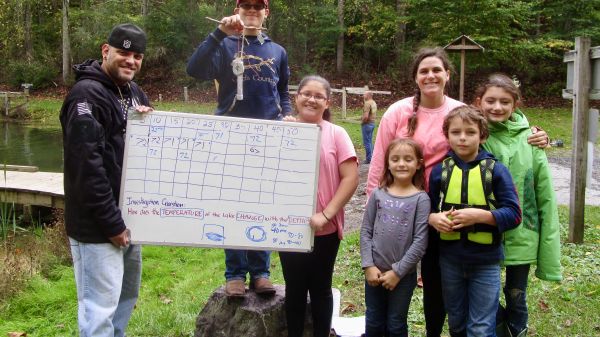
eeBLUE: Watershed Chronicles
This post was written by Elise Sheffield, Education Director, Boxerwood Education Association (Lexington, VA).
Located in mountainous western Virginia, Boxerwood Education Association has partnered with three rural school divisions for many years. Connecting watershed/STEM education with three, school-run 21st Century Community Learning Centers (CCLCs) made sense, and thus our program “Trail Blazers” was born. This project introduces elementary and middle school students to watershed science through high-interest activities such as hiking, paddling, and fishing.
Our program depends on physical connection to the natural world, so initially we chose to go dormant during the pandemic. Happily, as the pandemic situation evolved, we discovered that the outdoor-only model suited circumstances well. Since May 2021, more than 150 students, teachers, and family members have safely and successfully participated in Trail Blazers programming.
What does Trail Blazers programming look like in the age of Covid-19? Last spring we facilitated a series of afterschool river investigations on a nearby quiet stretch of water. Working in small groups, twenty middle school students proposed and carried out a series of water quality investigations, each observing social distance in their own kayak. By summer we were running week-long outdoors-only summer day camps at our 15-acre nature center, a local river park, and a nearby lake. These programs also went well, but what we really want to share is the new trail we serendipitously blazed for family learning.
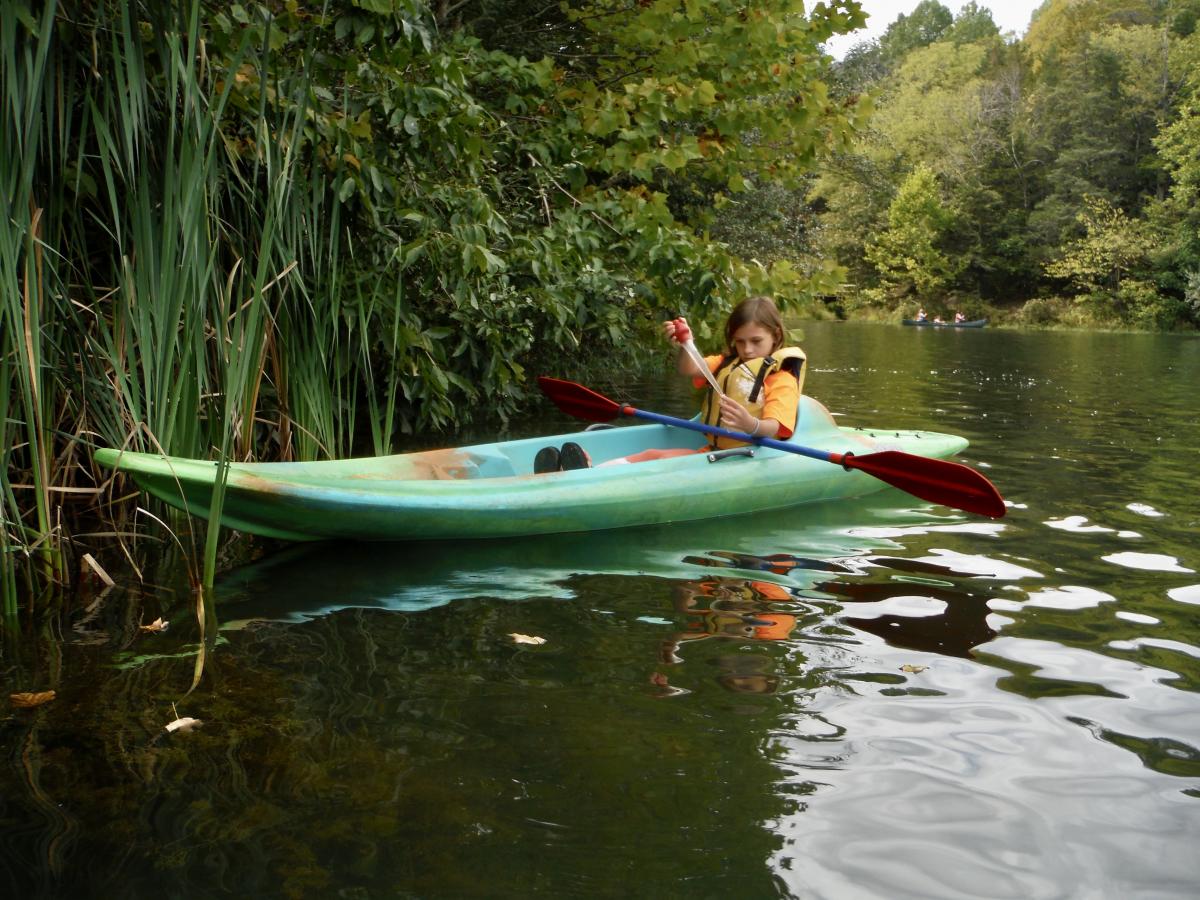
Family learning is a cornerstone component of every 21st CCLC in Virginia, but it is often difficult to get families involved. Family programming was not part of our original proposal (or the grant RFP), but we received permission from NAAEE to try it out when we realized this was a form of learning the CCLCs felt comfortable with in pandemic times. Providing off-site programming on Saturdays met CCLC interests in keeping in touch with families while CCLCs were still mostly operating remotely. As safety precautions, families provided their own transportation to our program sites and agreed to stay together in their family pods throughout the activities. After many weeks of home-bound everything, families were keen to venture out and try something new—and we were ready!
The spring series went so well that we are offering a fall 2021 series, too. Typically each Trail Blazers program is 2–4 hours in length. Groups of up to thirty participants include not only parents, but also guardians, siblings and CCLC staff. Also, we have offered joint programming with one middle school CCLC and its elementary CCLC feeder since the student populations overlapped. Our data-rich activities have included bio-blitzes, water quality monitoring, and now most recently, design-your-own inquiries with engineering challenges. Last week, for example, we met families at a nearby lake and challenged them to create and deploy very basic underwater temperature probes as a tool for determining how lake temperature changes with depth. Yes, that investigation involved canoes for gathering the data!
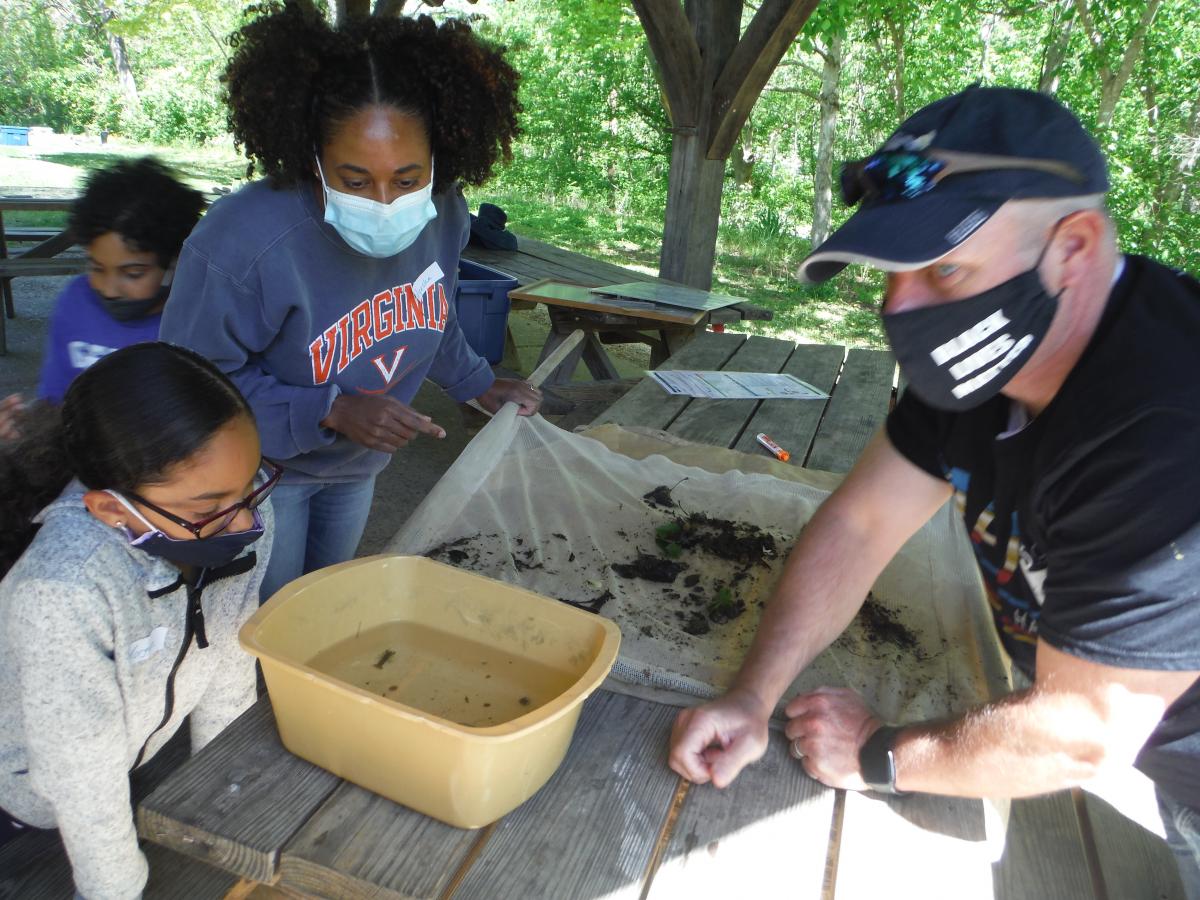
It’s been a true delight to watch family members enjoy one another’s company while also figuring out a STEM challenge together.
Keen to try it out? Here are a few tips:
- Select easy-access, high-interest locations and provide a hook like family kayaking or hiking as a program-integrated component.
- Focus on the family pods. Instead of teaching 20 students, for example, you are teaching 6 adult-led pods. It’s a bit like training the trainer, and it’s easy.
- Publicly acknowledge family adults as managers/leaders of their family unit. That enables adults of all backgrounds to shine. Sometimes they are also the teachers, but often it’s the students who are teaching their adults, so there’s a role for everyone in this form of family learning.
- Pose a driving question each session that involves each group refining a question, making a plan, gathering data and sharing results. Step into the opportunity yourself as a curious learner. Science thus becomes creative and exciting and we’re generating new knowledge together.
- Value your role: you are the learning facilitator, but not the focus. Your job is to set up the learning adventure, bring the supplies, build community and inclusion, keep everyone safe, and guide group discussion. The rest will take care of itself. Have fun!
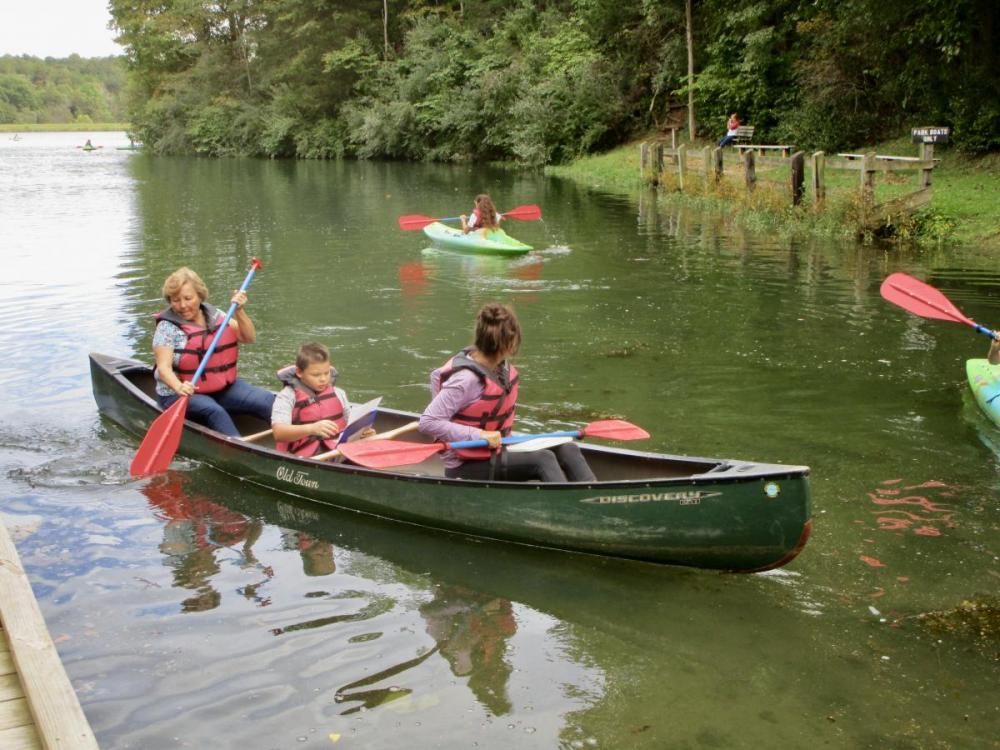
Like many places, it’s not just moms and dads raising kids—it’s also grandparents and other guardians. We were delighted that three generations of one family embarked on a shared investigation together, with their sixth grader leading the expedition. Photo credit: Boxerwood Education Association
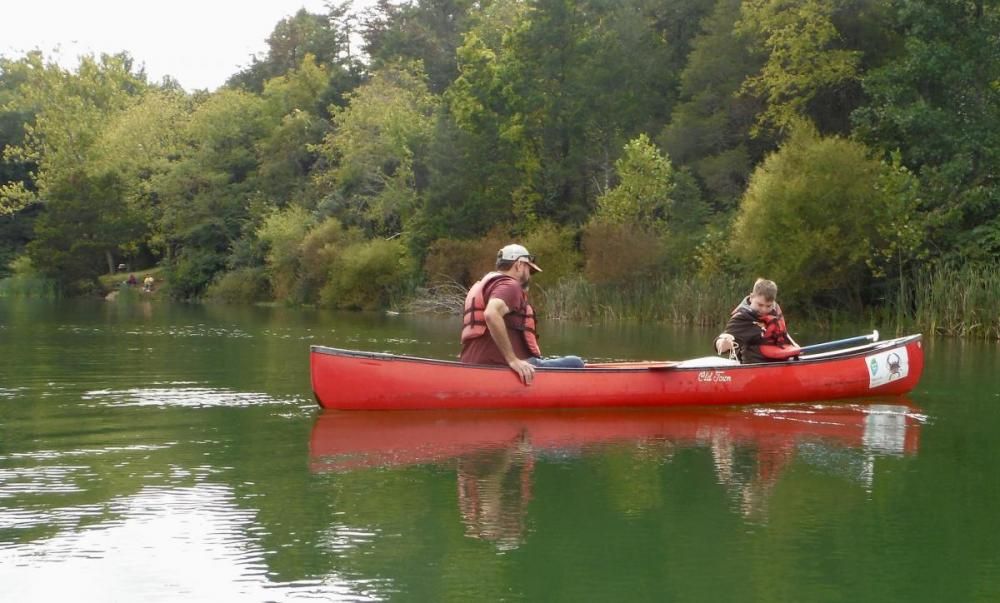
In our experience Saturday programs attract the interest of fathers, including those who may not always reside with their children. One father we met drove six hours for a weekend visit, choosing to connect with his children through shared adventures with Trail Blazers. Photo credit: Boxerwood Education Association
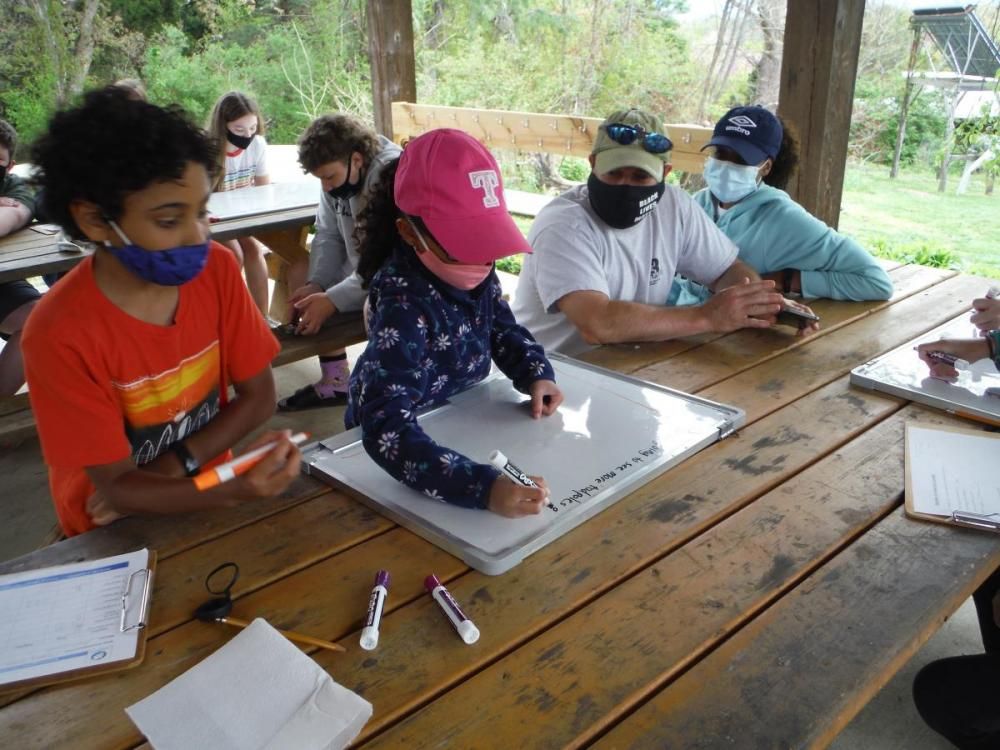
The 4-hour family Trail Blazers programs take families through the scientific method, including data-gathering, analysis, and sharing. Photo credit: Boxerwood Education Association
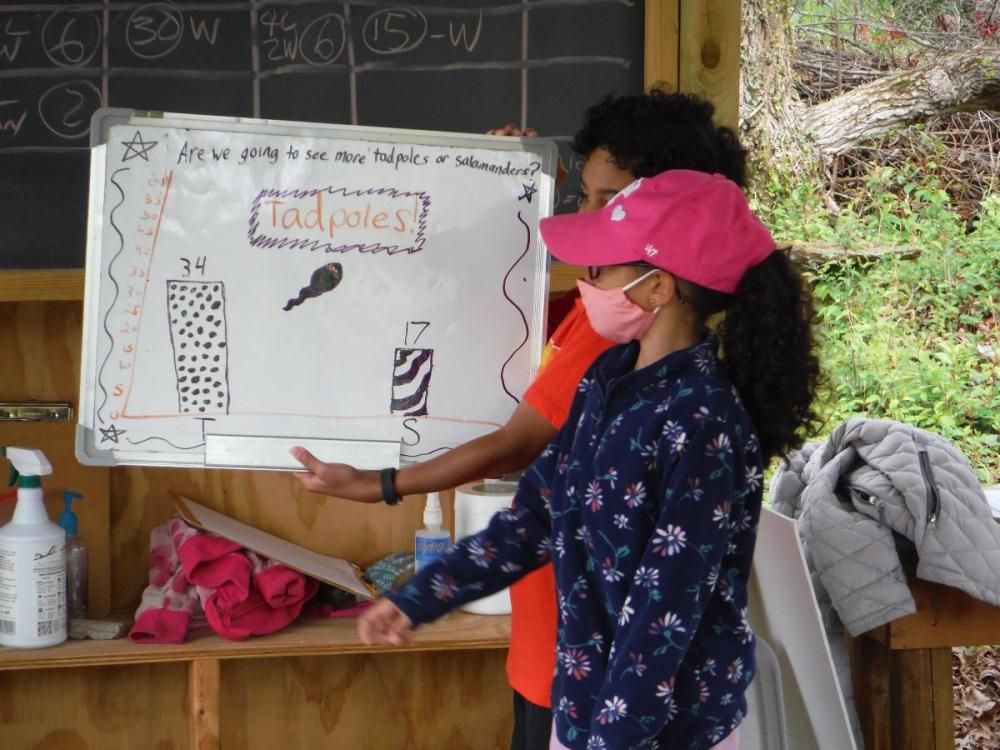
Families like generating graphs with their collected data and sharing their findings with other family teams. Sometimes parents help; sometimes kids do the work. Photo credit: Boxerwood Education Association
The NOAA Office of Education and NAAEE partnered to increase environmental and science literacy among NOAA’s partners and external networks. In this five-year partnership supported by the U.S. Department of Education, NOAA and NAAEE worked together to provide enriching after-school watershed-related STEM (science, technology, engineering, and mathematics) projects through NOAA-21st Century Community Learning Centers Watershed STEM Education Partnership grants. These grants supported programming for a total of 100 local 21st Century Community Learning Centers (21st CCLC) sites and their students. The 30 selected projects served 18 states, ranging from Alaska to Florida.






Comments
Thank you for posting about this topic! It is so powerful to get families involved in environmental education. I am interested to learn if Blazing Trails does a "before" and "after" questionnaire with families to get a sense of what families have learned and their big take-aways. I think it would also be interesting to reach out to families a year or two or five down the road to ask them about any lasting effects the program had.
As a youngster, I had the opportunity to build trails with my dad and I think it really gave me a sense of citizenship and engaging with the natural world... for the benefit of my community! And of course, a stronger bond with my dad. Engaging kids in environmental education is important, but it seems to me that the impact of such an experience would grow even more when the whole family is involved.
What also sticks out to me is the realization that there are very few opportunities for families to learn together. Usually the parent is teaching the child about a topic, or perhaps the child is telling the parent about what they learned at school. But learning and experiencing something new for both of them is quite profound. I love the idea of the family Trail Blazer programs and wonder how a similar program could be implemented here in southeast Arizona. It seems that a large difference would be the environment-- for each different location a Trail Blazer program happens, the curriculum must also be changed to fit the ecosystems of the area. I also wonder if and how the obstructions to families participating changes, depending on the region. I assume that families everywhere may struggle with transportation, having the time, or having interest, but I wonder if there are any issues that are location or population-based and what could be done to alleviate those burdens.